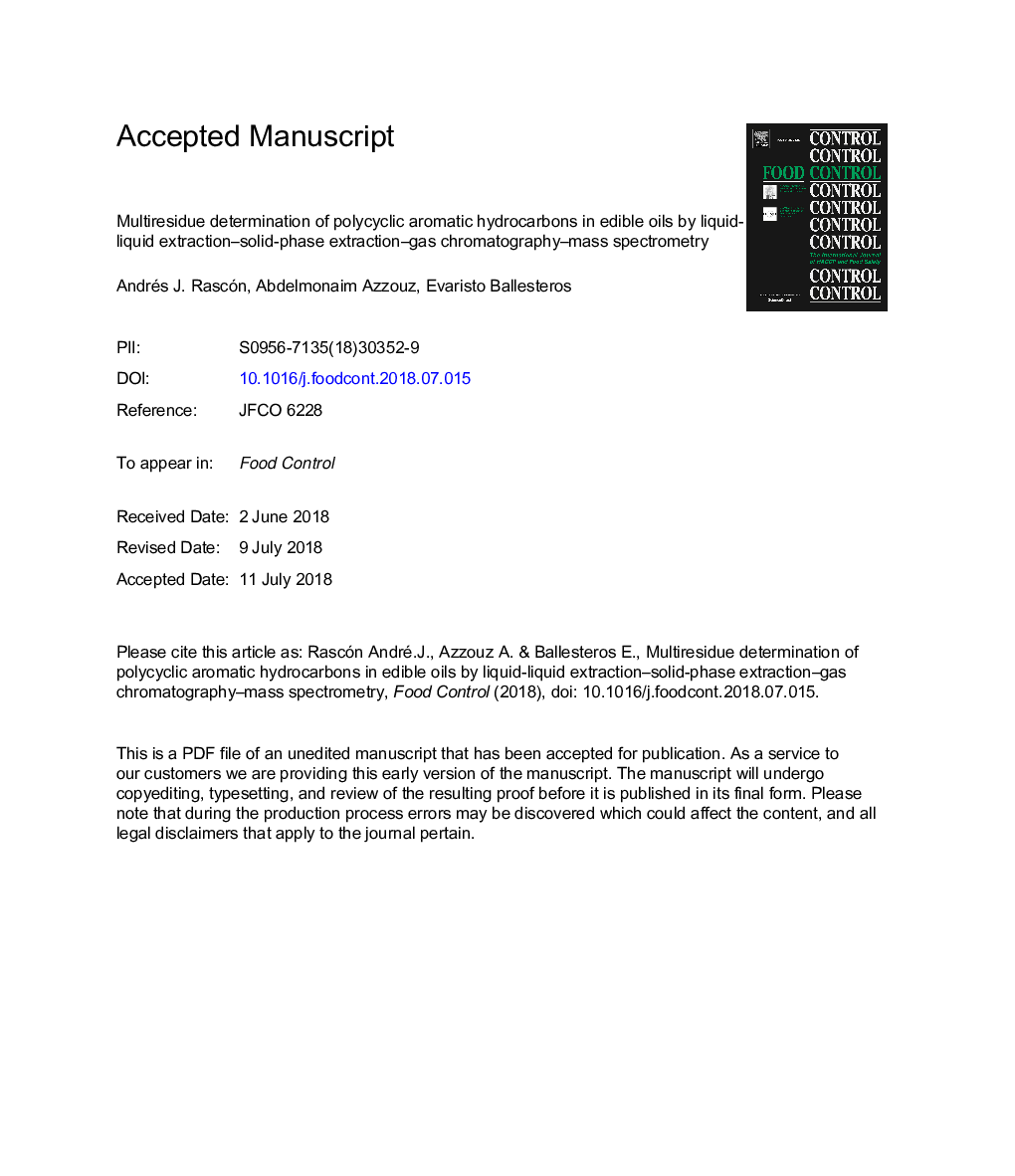| Article ID | Journal | Published Year | Pages | File Type |
|---|---|---|---|---|
| 8887773 | Food Control | 2018 | 26 Pages |
Abstract
The presence of polycyclic aromatic hydrocarbons (PAHs) in edible oils is usually due to environmental contamination, manufacturing processes or the nature of the oil. Because oils constitute a very large family of foodstuffs that are ubiquitous in human diet, the presence of PAHs in them may have a considerable impact. In this work, we developed a method for determining EPA's 16 PAH priority pollutants using liquid-liquid and solid-phase extraction for their extraction and isolation, and gas chromatography-mass spectrometry for their quantification. The proposed method is highly sensitive, with limits of detection from 4 to 110â¯ngâ¯kgâ1, accurate (PAH recoveries of 87-104%) and precise (relative standard deviationâ¯<â¯7.5%). Application to various types of oil (olive, sunflower, coconut, soybean and sesame) testified to its flexibility. Most of the samples studied contained more than three PAHs, albeit at concentrations below the legally allowed levels. Only two samples of refined sunflower oil contained no PAH at levels within the sensitivity range of the method.
Keywords
Related Topics
Life Sciences
Agricultural and Biological Sciences
Food Science
Authors
Andrés J. Rascón, Abdelmonaim Azzouz, Evaristo Ballesteros,
